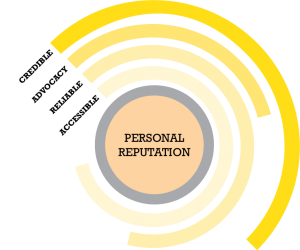The Email Edge: Does The Gmail Study Have The Stuff?
by Ray Schultz, Columnist, February 17, 2017
Gmail users are ignoring Gmail’s inbox classification plan — only a third employ it, and they haven’t turned it into a promotional ghetto, according to a Return Path study issued earlier this month. But they still seem to want a way to manage their inboxes, even a rudimentary one, and companies are trying to provide it.
For example, Microsoft is trying to serve Outlook users with its Focused Inbox prioritization service, in which messages are labeled “Focused” and “Other,” CMS Wire reports.
Then there are email apps like Spark. “Spark’s main pitch is its ‘intelligence,” writes Thorin Klosowski in an article on Life Hacker. “It has a ‘smart’ inbox, ‘smart’ search, and ‘smart notifications.’ What this means in reality is automation, but regardless of what you call it, it works well for anyone who doesn’t want to fiddle around and sort their email manually.”
Another app, Airmail, also offers a range of features, Klosowski continues. “Personally, my favorite little change you can make is the message preview size,” he writes. “You can alter the number of lines shown for an email on the inbox screen, making it much easier to triage emails without ever opening them. Everything else you expect to be here is here, like labels, filters, and different signatures.”
But back to Gmail. One observer has raised questions about the Return Path study. If you recall, Return Path surveyed 1,628 Gmail and found that there had been a 66% falloff in usage from 2013, when Gmail announced the service, which breaks email messages into five categories: Social, promotions, updates, forums and primary.
What’s the problem?
“I’m always a bit surprised how Return Path seems to generalize the findings they make with their tests,” writes Robert Harnischmacher, managing director of Publicare Marketing Communications GmbH in Frankfurt, in an email. “All Return Path can really do is use standardized Gmail accounts and check where an email lands if the tabs are activated. This does not and cannot take into account the actual behavior of real-life email recipients with a Gmail address which influences the inbox placement as Gmail ‘learns’ their users’ preferences.
“My team looked at this from another angle and checked the actual behavior of Gmail contacts vs. non-Gmail contacts from a regular weekly email send we manage that goes out to a 6-digit number of contacts each time. The difference in the open rate for those campaigns is statistically insignificant with an average delta of less than 1% between those two groups. If Gmail really had such a large effect on the response the delta as a result would be larger.”
Return Path has not yet answered these comments, and we should note that this critique is based on a different methodology. But one thing is clear: Consumers, email service providers and app makers are still looking for a more convenient way to handle the inbox deluge.
MediaPost.com: Search Marketing Daily
(67)
Report Post




